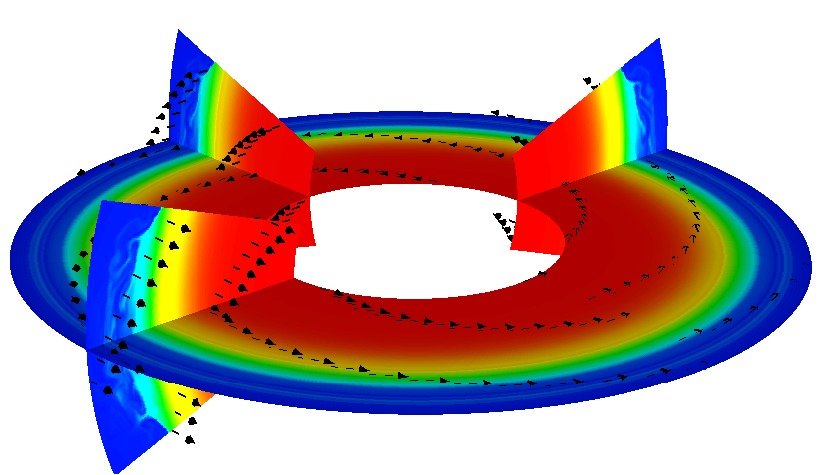Lecture: Stellar structures, evolution, and explosions

Winter semester 2016/2017
Prof. Dr. F. Röpke, L. Horst, Dr. P. Edelmann, Dr. S. Jones, Dr. S. Ohlmann
Lecture: Tuesday, 14 – 16 h
Homework session: Tuesday, 16 – 18 h
The homework problems have to be uploaded. Click here to find the lecture on the E-learning system.
Syllabus
Stars are the building blocks of the Universe. This lecture covers their structures, evolution, and explosions from a theoretical point of view.
- Brief overview of observational results
- Theoretical modeling approaches
- fluid mechanics and mechanical equilibrium of stars
- simple stellar models
- energetic equilibrium of stars
- Physical properties of stellar matter
- stellar thermodynamics
- equation of state
- opacities
- Nuclear processes in stars
- energy production and reactions
- thermonuclear reaction rates
- main nuclear burning cycles
- neutrino emission
- Energy transport in stellar interiors
- radiation, diffusion, conduction
- convection
- Stellar evolution models
- basic equations
- stellar stability
- homology relations
- schematic stellar evolution
- Early stages of stellar evolution and main sequence phase
- pre-main sequence
- zero-age main sequence
- central hydrogen burning
- Post-main sequence evolution
- Schoenberg-Chandrasekhar limit
- hydrogen-shell burning
- helium burning
- pulsational instability
- Late evolution of low- and intermediate mass stars
- the asymptotic giant branch
- white dwarfs
- Massive stars
- stellar winds
- advanced burning stages
- pre-supernova evolution
- Stellar explosions
- supernovae
- stellar remnants
Über das HITS
Das HITS (Heidelberger Institut für Theoretische Studien) wurde 2010 von dem Physiker und SAP-Mitbegründer Klaus Tschira (1940-2015) und der Klaus Tschira Stiftung als privates, gemeinnütziges Forschungsinstitut gegründet. Es betreibt Grundlagenforschung in den Naturwissenschaften, der Mathematik und der Informatik. Zu den Hauptforschungsrichtungen zählen komplexe Simulationen auf verschiedenen Skalen, Datenwissenschaft und -analyse sowie die Entwicklung rechnergestützter Tools für die Forschung. Die Anwendungsfelder reichen von der Molekularbiologie bis zur Astrophysik. Ein wesentliches Merkmal des Instituts ist die Interdisziplinarität, die in zahlreichen gruppen- und disziplinübergreifenden Projekten umgesetzt wird. Die Grundfinanzierung des HITS wird von der Klaus Tschira Stiftung bereitgestellt.